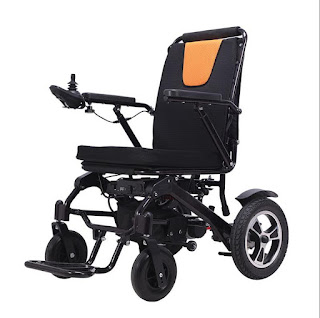Empowering Independence: The Rise of Electric Wheelchairs
Introduction: Electric wheelchairs have revolutionized the lives of individuals with mobility limitations, providing them with newfound independence, freedom, and enhanced mobility. These innovative devices have come a long way since their inception and are now at the forefront of accessible transportation and daily living aids. In this article, we delve into the world of electric wheelchairs, exploring their features, benefits, and the impact they have on the lives of users.
Enhanced Mobility and Accessibility: Electric wheelchairs have proven to be a game-changer when it comes to mobility for individuals with disabilities. Powered by electric motors, these wheelchairs offer smooth and effortless maneuverability, allowing users to navigate both indoor and outdoor environments with ease. With features like joystick controls, adjustable seating positions, and advanced suspension systems, electric wheelchairs provide a level of accessibility and freedom that traditional manual wheelchairs cannot match. Users can confidently navigate ramps, uneven surfaces, and tight spaces, enabling them to participate more actively in daily activities, social events, and even explore outdoor adventures.
Improved Independence and Quality of Life: Electric wheelchairs empower users by promoting greater independence and self-reliance. With the ability to move freely and easily, individuals with mobility limitations can perform tasks that were previously challenging or impossible. This includes activities such as grocery shopping, visiting friends and family, attending work or school, and engaging in recreational pursuits. The increased mobility offered by electric wheelchairs enhances social interaction, fosters a sense of belonging, and reduces the feeling of isolation that individuals with disabilities may experience. By enabling greater independence, these devices contribute to an improved quality of life for their users.
Customization and Accessibility Features: Youjian Electric wheelchairs are available in a wide range of models and designs, catering to the diverse needs and preferences of users. They can be customized with various seating options, including tilt-in-space, reclining, and elevating seats, ensuring optimal comfort and positioning. Accessibility features such as adjustable armrests, leg rests, and footplates further enhance user comfort and support. Many electric wheelchairs also come with additional features like programmable driving modes, powered seat elevation, and advanced driving controls, making them adaptable to individual requirements. These customization options ensure that electric wheelchairs can meet the specific needs of each user, promoting maximum comfort and functionality.
Technological Advancements and Future Trends: As technology continues to advance, electric wheelchairs are evolving to meet the ever-growing demands of users. Innovations such as obstacle detection systems, voice-controlled interfaces, and smart navigation capabilities are being integrated into modern electric wheelchairs, making them even more user-friendly and efficient. Additionally, advancements in battery technology have led to the development of lightweight and long-lasting power sources, ensuring extended usage without frequent recharging. Furthermore, there is a growing focus on sustainable manufacturing practices, with eco-friendly materials and energy-efficient components being utilized in the production of electric wheelchairs.
Conclusion: Electric wheelchairs have transformed the lives of individuals with mobility limitations, offering enhanced mobility, independence, and a greater sense of empowerment. With continuous advancements in technology, these devices are poised to further revolutionize accessibility, making daily activities more accessible and enjoyable for millions of people around the world. Lightweight Electric wheelchairs are not just mobility aids; they are vehicles for personal freedom and inclusivity in an ever-evolving society.

评论
发表评论